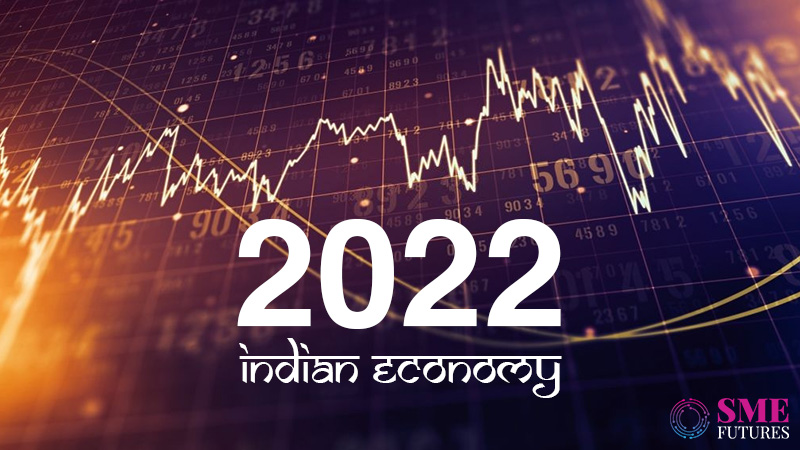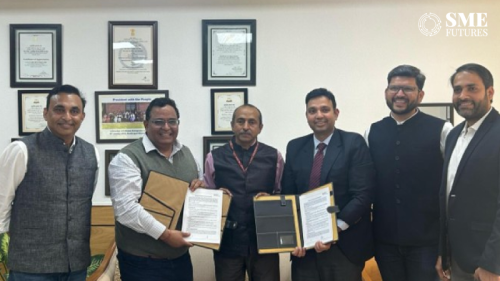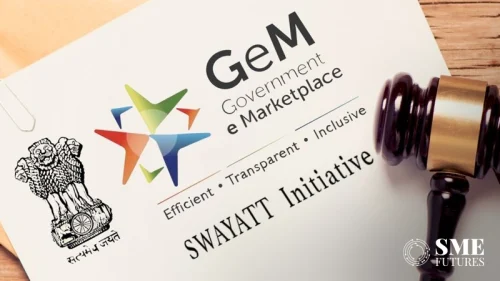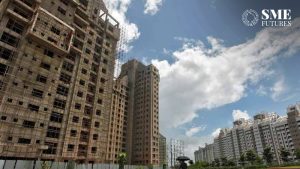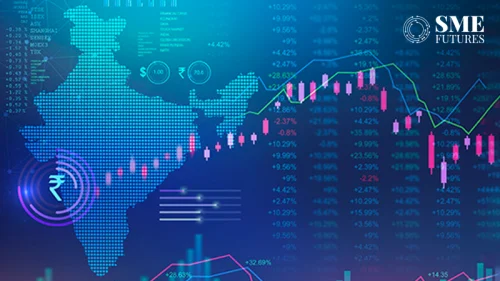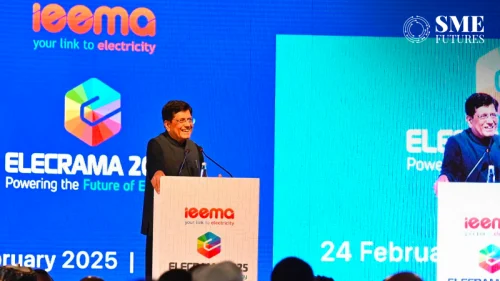Just like 2021, 2022 too has begun amidst considerable uncertainties. Assuming that we manage to survive the third wave and recover sufficiently, there are a few challenges that we could still be facing in the coming period, such as rising coronavirus cases, spiralling commodity prices and a continuous rise in inflation.
However, a slew of monetary policies, development schemes, continuing vaccination drives, and budgetary announcements will set the tone for India’s economy which is projected to grow over 9 per cent in the current fiscal year ending in March 2022.
The reactions that we have received from the experts is a mixed bag, let’s see what they have to say.
Economy 2022
In the 2021 April-June quarter, the economy recorded a whopping 20.1 per cent growth but that came mainly on the back of the base effect as the GDP contracted 24.4 per cent in the same period a year ago.
Nevertheless, an 8.4 per cent growth in the second quarter (July-September) was more meaningful as it indicated a sustained recovery.
The country’s exports have picked up in recent months, which is also an indicator of the substantial recovery of the economy.
Industry body FICCI President Sanjiv Mehta said that a likely growth of over nine per cent in the current fiscal year ending March 2022 was good, but it would be more important to “achieve a sustained growth of eight per cent over a long period of time”.
Economist Vaibhav Sharma also projects India’s value to grow by nine per cent this year, becoming the world’s fastest-growing giant economy right behind China.
“India counts among the different rising markets in growth potential. India as a country offers a great economic future hopped-up for the most part by a growing economy that is predicted to double by 2025,” he says.
Sustained growth is needed for accelerating job creation, removing poverty and bringing in prosperity in the rural and semi-urban areas.
According to Fitch, the services sector is expected to show a strong reading amid the lifting of most restrictions.
“We have cut our FY22 (financial year ending March 2022) GDP growth forecast, to 8.4 per cent (-0.3 pp). GDP growth momentum should peak in FY23, at 10.3 per cent (+0.2 pp), boosted by a consumer-led recovery and the easing of supply disruptions,” the global rating agency says.
A dovish monetary policy by the Reserve Bank of India (RBI) has also played a key part in stimulating the overall economic activities. With global inflationary trends slightly on the upward trajectory, how long the RBI will continue with its relatively loose monetary policy will be closely watched by the markets.
On the other hand, Japanese brokerage firm Nomura says that the current growth cycle in the country is not durable and will peak by the first half of 2022.
It points out that recovery has been uneven, hurting the consumption of lower-income households, and a sustained capital expenditure upcycle was also not in sight. “With mixed growth, high inflation and wider twin deficits, we expect India’s risk premium to rise and the RBI to catch up as it falls behind the curve,” its analysts say.
That means higher inflation and wider current account deficit will come into play.
Inflation
Fuel, edible oil and other commodities turned dearer in 2021. With the resurgence of COVID-19 cases, recovery might be disrupted and thus the experts are of the view that elevated inflation is likely to stay longer.
The Reserve Bank of India (RBI), which takes into account retail inflation as one of the key components to review the repo rate, has projected Consumer Price Index (CPI) based retail inflation to ease to around 5 per cent by the first half of the next calendar year.
From a benign level of a little over 4 per cent in January 2021, retail inflation breached the 6 per cent mark twice in mid 2021, before declining towards sub-5 per cent in November. There were some spurts in between though.
On the other hand, Wholesale Price Index (WPI) based inflation hit a record high of 14.23 per cent in November as against 2.29 per cent in 2020 due to the hardening of the prices of mineral oils, basic metals, crude petroleum and natural gas. It was at 12.54 per cent in October. WPI inflation remained in double digits for eight consecutive months beginning April.
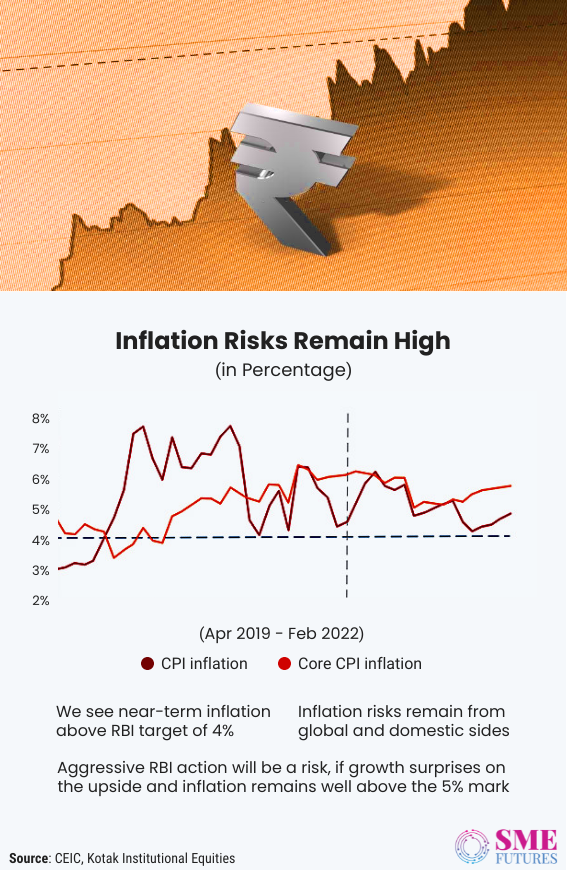
According to the Central Organization for Oil Industry & Trade (COOIT), even if the government tried to control price rise by reducing import duties of crude and refined edible oils, it didn’t work. The new high price is passed to the end user, due to the high input cost of manufacturing. That includes the logistics cost as well. Hence, the consumers will have to pay more for most commodities.
Global Chief Economist at Dun & Bradstreet, Dr. Arun Singh says, “Rising of inflationary pressures might dampen the confidence levels for spending and restrain the pace of revival in demand which is yet to recover to the pre-pandemic level. D&B proprietary data shows that increase in energy prices has already started impacting the credit performance of energy intensive sectors with an increased risk of business closures, especially in the unorganized sector.”
Madhavi Arora, Lead Economist at Emkay Global Financial Services, told PTI, “We see FY22 inflation at 5.5 per cent (RBI: 5.3 per cent) with the risk largely balanced. Even with food inflation averaging around reasonable levels, the core inflation will average nearly 6.2 per cent, outdoing the headline. We remain watchful of inflation push-and-pull factors.”
Trade deficit
India’s trade deficit widened sharply to US$ 22 billion in December of 2021. Imports jumped 39.2 percent year-on-year to a record high of US$ 37.3 billion while exports jumped at a softer 37.3 percent to US$ 59.3 billion. Considering the April-December period of 2021, the trade deficit stood at US$ 143.97 billion as per the Ministry of Commerce and Industry.

The widening gap in India’s exports and imports is expected to increase further.
According to Kotak Securities, the December trade deficit of $22 billion is only slightly less than the record highs of September and November. “We expect the trade deficit to remain high and the CAD/GDP at (-)1.7 per cent in both FY2022E and FY2023E with USD-INR in the range of 74-76.5 in the near term,” the brokerage firm states in its report.
Simultaneously, it estimates trade deficit to go up to $200 billion in the next fiscal year 2022-23.
“We estimate the trade deficit in FY2022E at US$190 billion (against US$102 bn in FY2021) and at US$200 billion in FY2023E. We pencil in invisibles at $138 billion leading to CAD of $51.9 bn (1.7 per cent of GDP) in FY2022E. For FY2023E, we estimate CAD at US$58.5 bn (1.7 per cent of GDP) at an average crude price of US$70/bbl and steady invisibles net receipts,” says the report.
Policy Normalization
Giving the resurgence in COVID-19 cases and the widening of restrictions, for most experts it’s a wait and watch situation. Economists are now expecting the RBI to delay the policy normalization move, which is expected in the February review.
HDFC Bank Chief Economist Abheek Barua does not see the RBI-monetary policy committee (MPC) going ahead with the policy normalization drive anytime soon, at least not in the next review in February as he expects the rising Omicron cases to shave 30 basis points off the March quarter GDP.
“Rate hike expectations will moderate as the growth gets impacted and the reverse repo hike expected in February is also uncertain now,” Barua says in a note, adding that the central bank will continue with its focus on liquidity normalization and capping yields.
Similarly, Tanvee Gupta-Jain, the Chief Economist at UBS Securities India also expects the central bank to remain in the “wait-and-see mode” for some more time.
“If the risks surrounding the new Omicron variant remain, adding to the near-term uncertainty, we think the MPC could remain in the “wait-and-see” mode at the February policy meeting and can delay policy normalization to the April policy meeting,” she says.
Position of the rupee
These economists also think that the rupee will be under increased pressure this year given the fluid situation that the global economy is in and the US Fed’s already announced tapering.
While Gupta-Jain sees the rupee at 74-78 to the dollar, Barua sees it at 74-76 this year. The evolving pandemic situation and the US Fed’s move to raise rates this year will leave the rupee vulnerable, and it may trade in the 74-78 range in 2022, Gupta-Jain says.
Tightening global financial conditions amid the Fed’s tapering and the resultant 100 basis points rise in the US 10-year real yields in 2022, is set to make the road bumpier for the rupee, which will continue to face depreciation pressure against the dollar as the current account deficit widens and the equity flow outlook dims.
“We expect the rupee to trade in the 74-78 range against the dollar this year. That said, unlike 2013 and 2018, we believe India is managing external vulnerability risks reasonably well and we do not foresee massive sell-off pressure,” Gupta-Jain says in the note.
Barua also said that the Omicron threat will have the rupee staying range bound between 74-76 to the greenback but hopes that the RBI will intervene to support the unit.
FDI and business expansion
Among other things, multiple trends across India Inc including in small businesses, could impact the economic growth of India. One of the trends is FDI and SME expansion in the international markets.
So far, a slew of policies and the liberalization of foreign direct investment norms have helped India receive record FDI inflows. Implementation of measures like the PM Gati Shakti, single window clearance and GIS-mapped land bank are expected to further push investments in 2022.
During April-July this fiscal year, FDI into the country increased by 62 per cent to US$ 27.37 billion.
Increasing FDI reflects global confidence in India’s growth story. The world seeks dependable partners and India meets all of the growth parameters that investors want to see before investing.
With this, there are immense opportunities for small and medium businesses to enter foreign markets such as the UK, the US and Europe and expand their growth.
“It is predicted that 2022 will be a bumper year for Indian SME expansion,” says Yash Dubal, Director of AY&J Solicitors.
Commenting on the global opportunities particularly for the UK market, Dubal says, “The British government continues to avidly pursue a trade deal with India. It is expected that one of the conditions of such a deal will be a relaxation of visa rules relating to businesses and individuals who want to work and invest in the UK. New visa routes are scheduled to be introduced, including the Global Business Mobility route for overseas businesses wishing to establish a presence in, or transfer staff to, the UK,”
“There are limitations on these, but smaller business owners can set up or buy a UK business, register it with the UK Government department that assigns visa sponsorship licenses and finally use the license to allocate themselves a Skilled Worker visa. This is a new and innovative idea that we have pioneered that no one is talking about but that works well for entrepreneurs who do not qualify under the other rules.”
Going ahead, FDI seems to be optimistic, exports too continue to register an impressive recovery and job creation and digital transformation are already on track. There are other key factors too that will add to the growth trajectory. Meanwhile, the experts are waiting for the union budget announcement in February to make further predictions. Also, the government’s fiscal approach and ambitious asset monetisation plans will chart the future course of reforms in the country.

